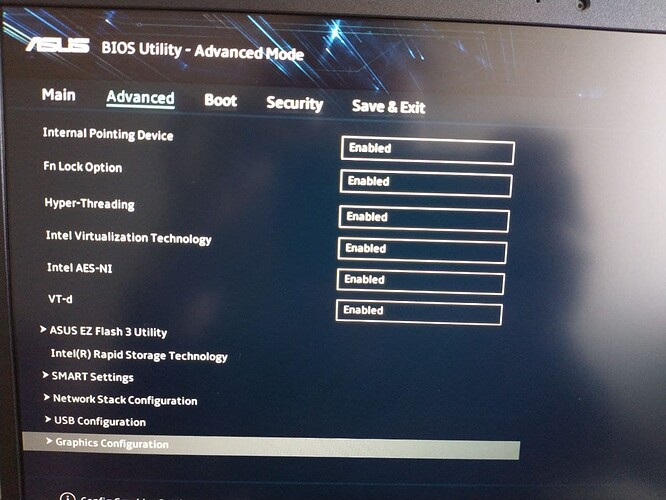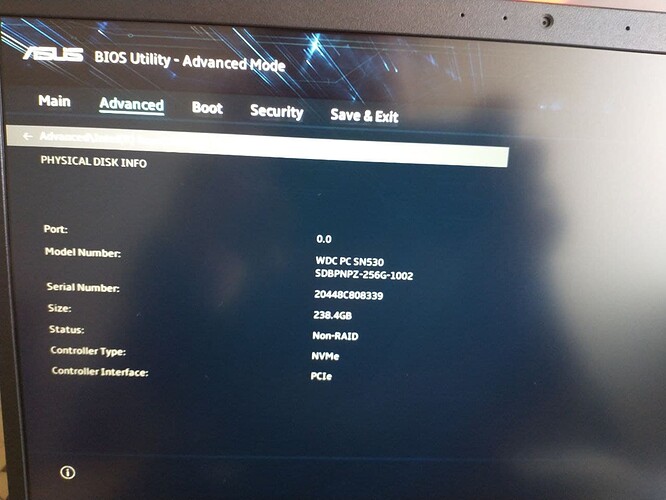Dear Megavolt, thank you so much for your replies and help.
I checked the BIOS once again to see if I could find any of the acronyms that you mentioned and I’m afraid that I couldn’t find much. Here’s a picture of the BIOS:
If I press Enter where it says “Intel (R) Rapid Storage Technology” I get to choose the SSD and then the following:
There’s nothing that I can turn on or off, but it says that the status is “Non-RAID”. Is that a good thing?
Regarding the other settings, the BIOS suggests that the first two (Internal Pointing Device and FN Lock Option) have to do with the touchpad and the FN keys so I guess they’re irrelevant. Then, when I try to toggle the Hyper-Threading setting it says that it may cause the system to malfunction, so I just left it enabled (which is the default option).
I disabled the other three settings (Intel Virtualisation Technology, Intel AES-NI and VT-d) and restarted the laptop to see if Manjaro would start but I’m afraid that I got the same message (the ERROR device UUID not found thing).
All the other tabs and settings from the BIOS don’t seem to do much about this, but I could enable or disable anything else if you think it’d work.
I really don’t know much about these Intel technologies and BIOS settings, but I believe that maybe I got something wrong on the GRUB settings or how I created the partitions. When I installed Manjaro the first time I chose the default graphical settings (which didn’t work) but then I tried to set the partitions manually so that I could have a swap partition (but it didn’t work either). I tried to follow the Manjaro User Guide but I’m not 100% sure that I got it right.
What I’m trying to say is that I have installed Manjaro several times before (on laptops with traditional HDDs) and never ran into any issues like these. Now I got a new laptop with an SDD (no HDD) and I thought that the default setup would work but maybe I’m doing something wrong (or I missed something).
I think that it’s probably something easy to set up but I just can’t find it yet, hahaha. I have already read other posts online but haven’t found a solution.
Anyways, thanks for trying to help me, you’re giving me hope 
(I apologise if I made spelling mistakes or wrote something that sounds weird, English is not my native language).




 that I really don’t want to try any other distro. If I find a solution I’ll post it here.
that I really don’t want to try any other distro. If I find a solution I’ll post it here. ).
).